On July 9, 2025, a twin-seater Indian Air Force (IAF) Jaguar trainer aircraft crashed near Bhanuda village in Rajasthan’s Churu district during a routine training mission, claiming the lives of Squadron Leader Lokendra Singh Sindhu and Flight Lieutenant Rishi Raj Singh. This marks the third Jaguar crash in 2025, following incidents in Ambala, Haryana, and Jamnagar, Gujarat, raising critical questions about the aging fleet’s reliability.
For investors and defense technology strategists, this tragedy underscores opportunities and challenges in India’s defense sector.
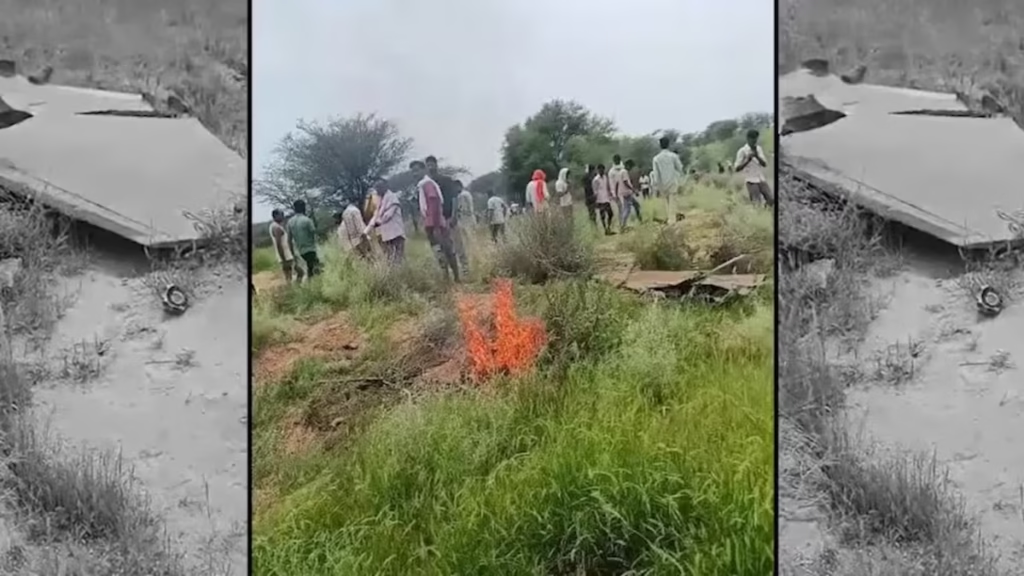
The Churu Crash: Key Details and Context
The IAF Jaguar, a SEPECAT fighter-bomber inducted in 1979, crashed around 1:25 PM IST in an agricultural field near Bhanuda village, Churu, after taking off from Suratgarh airbase. Eyewitnesses reported the aircraft falling in flames, with debris scattered across a 200-foot radius. The IAF confirmed no civilian damage and has ordered a court of inquiry to investigate the cause, with preliminary speculation pointing to technical issues or ejection seat failure.
This is the third Jaguar crash this year, following incidents in March (Ambala) and April (Jamnagar), where one pilot was killed. The IAF, the only air force still operating Jaguars, plans to phase them out by 2028-2031, but delays in acquiring modern aircraft like the HAL Tejas Mk2 and Rafale have prolonged their use.
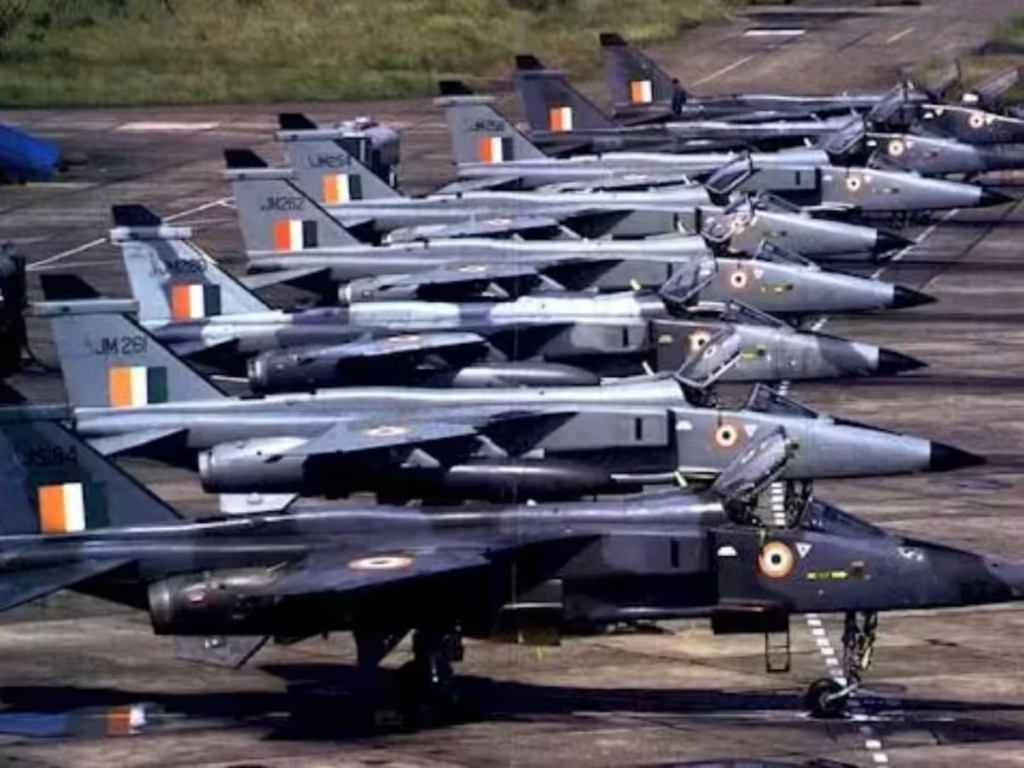
Economic and Strategic Implications
The Jaguar crashes highlight systemic challenges in India’s defense ecosystem, particularly the reliance on aging aircraft and delayed modernization. Key implications include:
- Operational Risks: The Jaguar fleet, over 40 years old, requires high maintenance, increasing operational costs and risks. Defense expert Maj Gen Rajan Kochhar noted that the aircraft’s age necessitates “very high maintenance levels,” straining IAF resources.
- Modernization Delays: Delays in delivering HAL Tejas Mk2, Rafale, and Multi-Role Fighter Aircraft (MRFA) force the IAF to extend the Jaguar’s service life, potentially until 2040. This creates a gap in combat readiness.
- Economic Impact: Each crash incurs significant costs, including aircraft loss (estimated at $20-30 million per Jaguar), pilot training expenses, and investigation efforts. The IAF’s 115 Jaguars (28 IB trainers, 79 IS strike fighters, 8 IM naval variants) represent a substantial investment at risk.
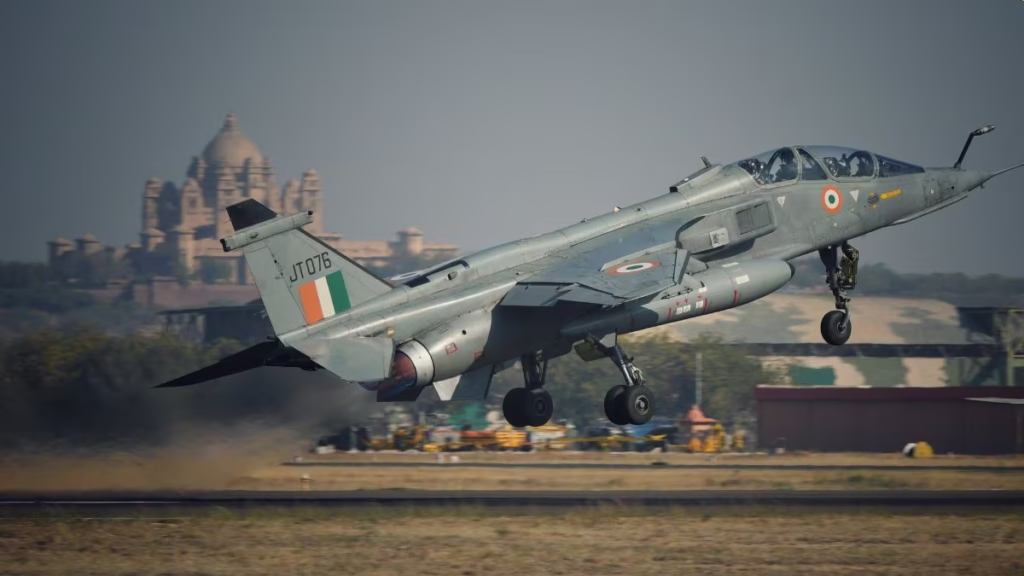
IAF Jaguar Squadrons: Current Status
The IAF operates approximately 115-120 SEPECAT Jaguar aircraft across six active squadrons, making it the world’s only air force still using this Anglo-French deep-penetration strike fighter, inducted in 1979. Known as “Shamsher” (Sword of Justice), the Jaguar is a critical component of India’s nuclear triad, capable of low-altitude, high-speed missions and nuclear payload delivery. The squadrons, each typically comprising 18-20 aircraft, are strategically deployed across India to address regional threats, particularly along the borders with Pakistan and China.
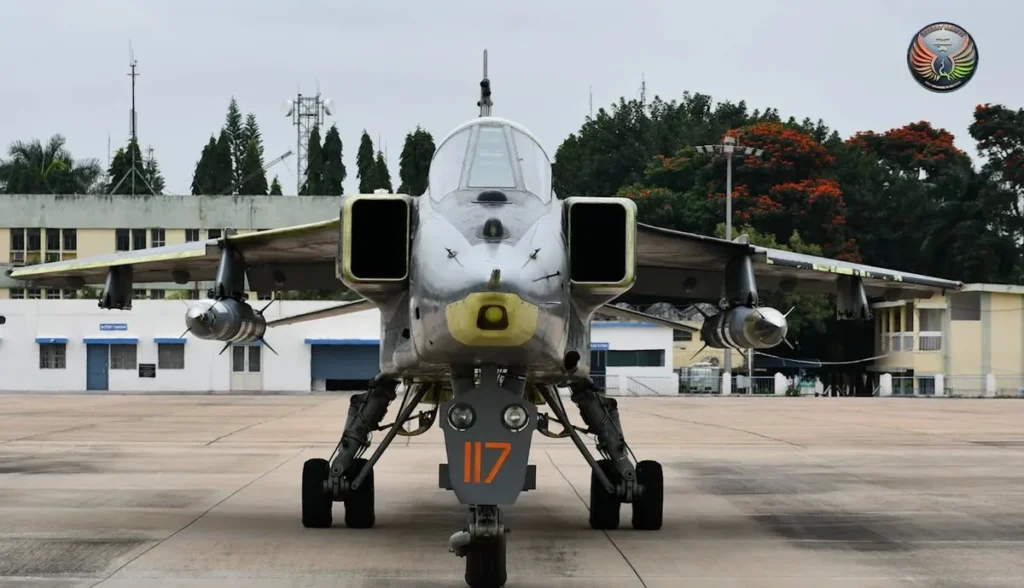
Below is a detailed overview of the active Jaguar squadrons, based on available data:
- No. 5 Squadron (“Tuskers”)
- Location: Ambala, Haryana
- Role: Ground attack and close air support
- Details: Equipped with Jaguar IS (single-seat strike) and IB (twin-seat trainer) variants, operational since August 1981 with UK-built aircraft. The squadron has been pivotal in operations like the 1999 Kargil War, conducting photo-reconnaissance missions.
- No. 14 Squadron (“Bulls”)
- Location: Ambala, Haryana
- Role: Deep-penetration strike
- Details: The first IAF squadron to receive Jaguars in 1979, re-equipped with UK-built IS and IB variants by March 1981. It played a key role in the 2019 Balakot strike, using Jaguars as decoys to divert Pakistan Air Force F-16s.
- No. 6 Squadron (“Dragons”)
- Location: Jamnagar, Gujarat
- Role: Maritime strike
- Details: Operates the Jaguar IM (maritime) variant, equipped with Agave radar and Sea Eagle anti-ship missiles. This squadron specializes in anti-ship and coastal defense missions, with 12 IM variants built by Hindustan Aeronautics Limited (HAL).
- No. 16 Squadron (“Black Cobras”)
- Location: Gorakhpur, Uttar Pradesh
- Role: Ground attack and reconnaissance
- Details: Equipped with Indian-built Jaguar IS and IB variants since October 1986, known for precision strikes and reconnaissance during the Kargil War.
- No. 27 Squadron (“Flaming Arrows”)
- Location: Gorakhpur, Uttar Pradesh
- Role: Deep-penetration strike
- Details: Operational with Indian-built IS and IB variants since June 1985, this squadron was the first to integrate HAL-manufactured Jaguars. It supports strategic operations along India’s northern and eastern borders.
- No. 224 Squadron (“Warlords”)
- Location: Jamnagar, Gujarat
- Role: Ground attack and maritime strike
- Details: Re-equipped with Indian-built Jaguars since March 2008, this squadron operates both IS and IM variants, focusing on multi-role missions. It was the last unit to receive HAL-built Jaguars (2002-2009).
Fleet Composition:
The IAF’s Jaguar fleet includes 79 IS (strike), 28 IB (trainer), and 8-12 IM (maritime) variants. Of the 160 aircraft originally acquired, 40 were UK-built, and 120 were manufactured by HAL under a technology transfer agreement. The fleet has been reduced to approximately 115-120 due to crashes and retirements, with 31 airframes cannibalized from France, the UK, and Oman for spares in 2018.

Upgrades:
The Jaguars have undergone multiple upgrades under the Display Attack Ranging Inertial Navigation (DARIN) program:
- DARIN I and II: Improved navigation, avionics, and weapon systems, including Magic air-to-air missiles and laser-guided bombs.
- DARIN III: Integrates EL/M-2052 AESA radar (via Israel Aerospace Industries), advanced avionics, and HOTAS controls, enhancing precision and survivability. The first DARIN III-upgraded Jaguar was delivered in 2021.
Retirement Plan:
The IAF plans to phase out the oldest Jaguars (UK-built) starting in 2028, with the full fleet retirement by 2031-2032, to be replaced by modern platforms like the HAL Tejas Mk1A, Mk2, and Multi-Role Fighter Aircraft (MRFA).
However, delays in these programs may extend the Jaguar’s service life to 2040.
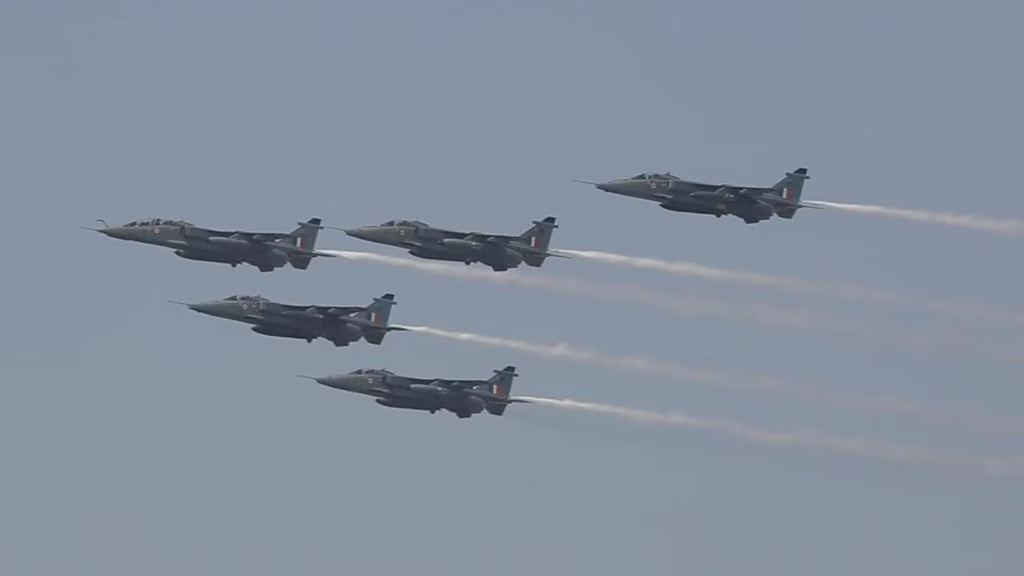
Implications of the Churu Crash
The July 9, 2025, crash in Churu, the third Jaguar incident this year (following Ambala in March and Jamnagar in April), highlights critical challenges:
- Aging Fleet: The Jaguars, now over 45 years old, require extensive maintenance (20 hours per flight hour), with issues like underpowered Adour Mk811 engines and outdated avionics increasing crash risks.
- Pilot Safety: The loss of both pilots in Churu, potentially due to ejection seat failure, underscores the need for modern safety systems. The IAF has faced at least six Jaguar crashes since 2012, with three fatalities in 2025 alone.
- Squadron Shortfall: The IAF’s current strength of 31 squadrons is well below the sanctioned 42, with the Jaguar’s six squadrons critical for maintaining operational capability. Delays in Tejas Mk2 and MRFA acquisitions exacerbate this gap.
- Public Sentiment: Posts on X express frustration with the IAF’s reliance on outdated Jaguars, with some calling them “the new MiG-21s” due to frequent crashes, potentially impacting investor confidence in defense modernization.
Opportunities for Investors and Defence Tech Strategists
The Churu crash and recurring Jaguar incidents present a unique moment for investors and defense tech innovators to address India’s defense modernization needs.
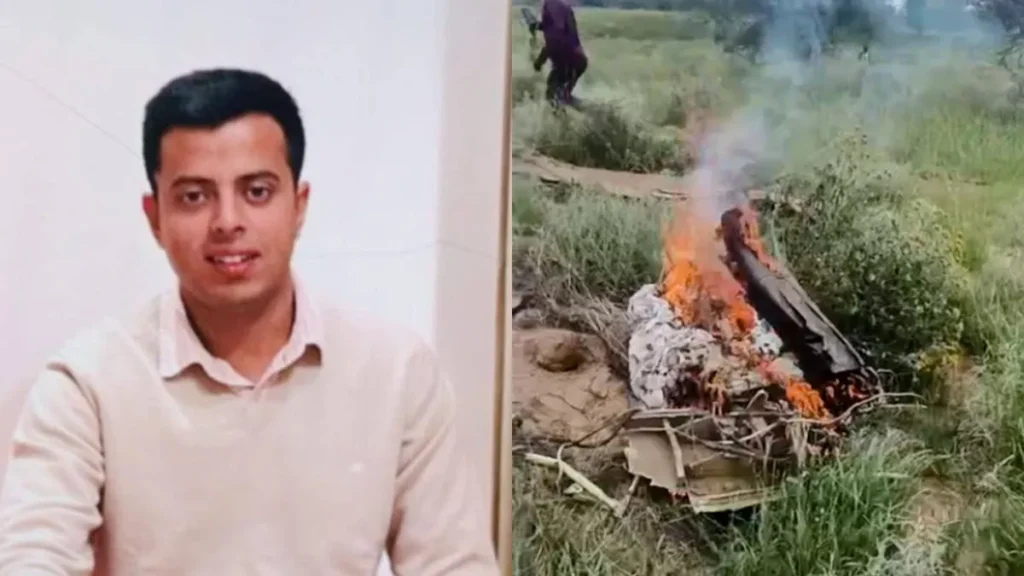
Here are actionable strategies:
- Invest in Aircraft Modernization Technologies:
- Upgrades for Aging Fleets: Develop cost-effective retrofit solutions, such as advanced avionics, radar systems, or ejection seats (e.g., ACES II, with a 95% survival rate). The 2010 plan to upgrade Jaguar engines with Honeywell technology was shelved due to high costs, signaling demand for affordable solutions.
- Opportunity: Partner with firms like Hindustan Aeronautics Limited (HAL) or explore opportunities at www.ytcventures.com to fund next-gen avionics startups.
- Focus on Indigenous Defense Manufacturing:
- Atmanirbhar Bharat: India’s push for self-reliance under initiatives like Make in India and Atmanirbhar Bharat prioritizes domestic production of defense equipment. The Tejas program, despite delays, exemplifies this shift.
- Opportunity: Invest in Indian defense startups developing drones, AI-based maintenance systems, or lightweight fighter components. Visit www.ytcventures.com for insights on high-growth defense tech ventures.
- Develop AI and Predictive Maintenance Solutions:
- AI-Driven Maintenance: AI and IoT can predict mechanical failures in aging aircraft, reducing crash risks. For instance, machine learning models can analyze flight data to flag potential issues.
- Opportunity: Collaborate with defense tech innovators featured on www.ytcventures.com to deploy predictive maintenance tools for the IAF.
- Capitalize on Distressed Assets:
- Post-Crash Opportunities: Defense contractors or SMEs affected by crashes or budget reallocations may face financial distress, offering acquisition opportunities at discounted rates.
- Opportunity: Explore distressed asset strategies at www.ytcventures.com to acquire and restructure defense-related businesses.
- Leverage Government Funding:
- Defense Budget: India’s 2025-26 defense budget allocates $74.8 billion, with $25 billion for capital expenditure, including modernization. Schemes like the Defence Acquisition Procedure (DAP) 2020 incentivize private investment.
- Opportunity: Access funding insights and connect with defense startups at www.ytcventures.com to tap into government contracts.

Risks to Consider
- Technical Challenges: Upgrading aging fleets like the Jaguar requires navigating complex integration issues, as seen in the failed 2010 engine upgrade plan.
- Policy Delays: Slow procurement processes and bureaucratic hurdles could delay returns on investment in defense projects.
- Public Sentiment: Posts on X highlight frustration with the IAF’s reliance on outdated aircraft, potentially impacting investor confidence in defense modernization.
Conclusion
The tragic IAF Jaguar crash in Churu on July 9, 2025, underscores the urgent need for defense modernization in India. For investors and defense tech strategists, this presents opportunities to fund aircraft upgrades, indigenous manufacturing, AI-driven maintenance, and distressed asset acquisitions. With India’s defense sector poised for growth under Atmanirbhar Bharat, now is the time to act.
Visit www.ytcventures.com for cutting-edge insights and investment opportunities in India’s defense ecosystem.Stay ahead with YTC Ventures Technocrat Magazine.
Subscribe now at www.ytcventures.com for the latest on defense tech and strategic investments!

Comments